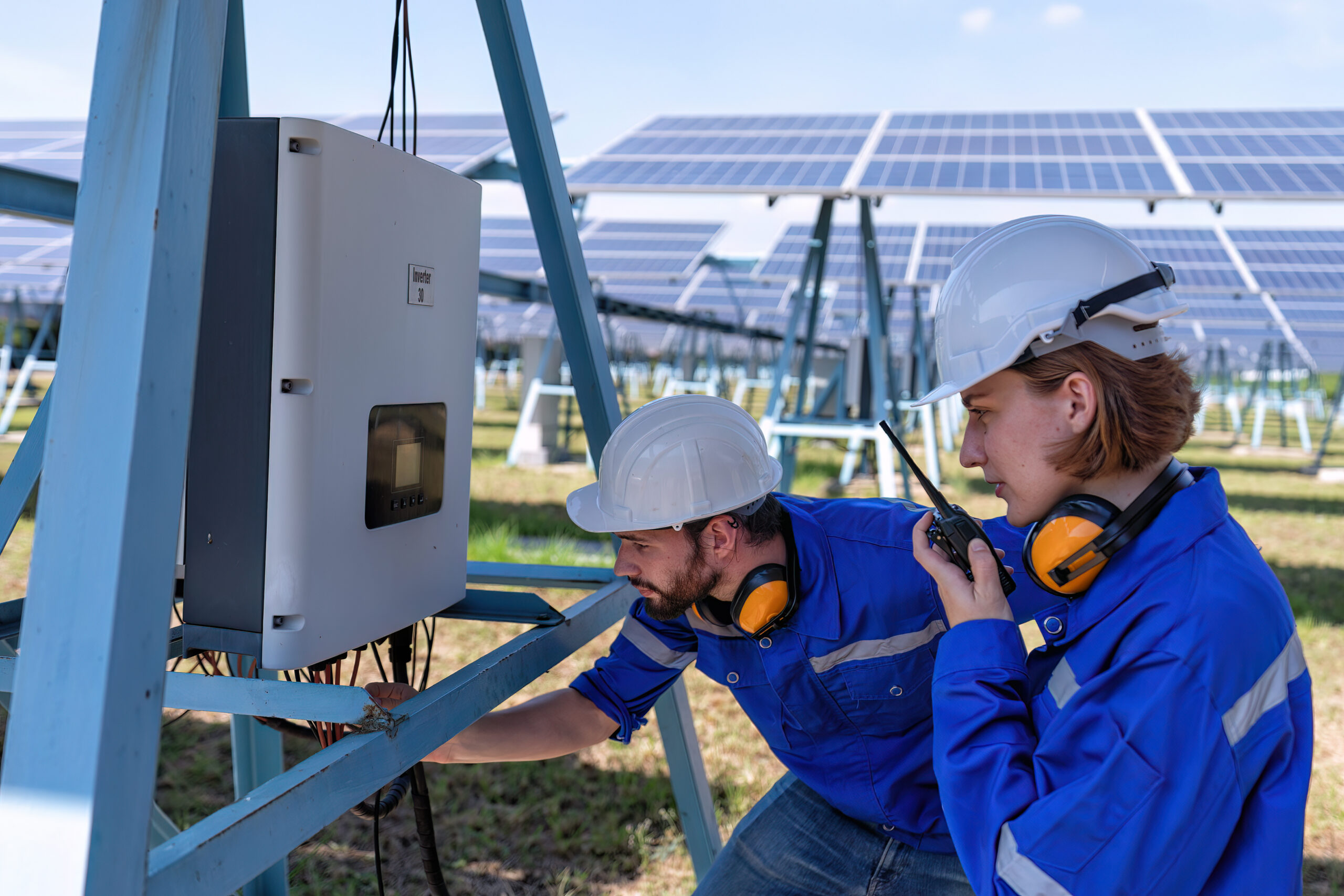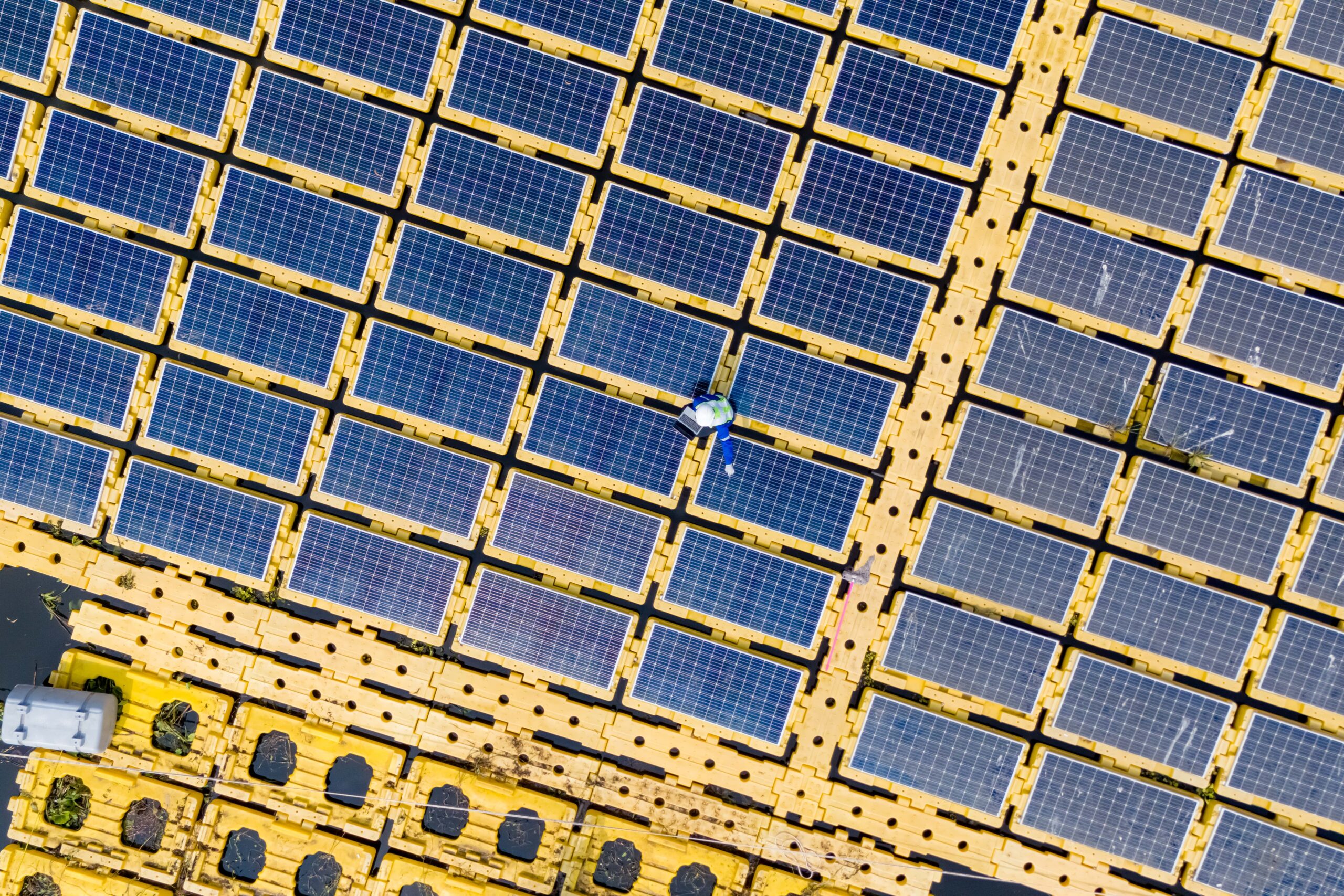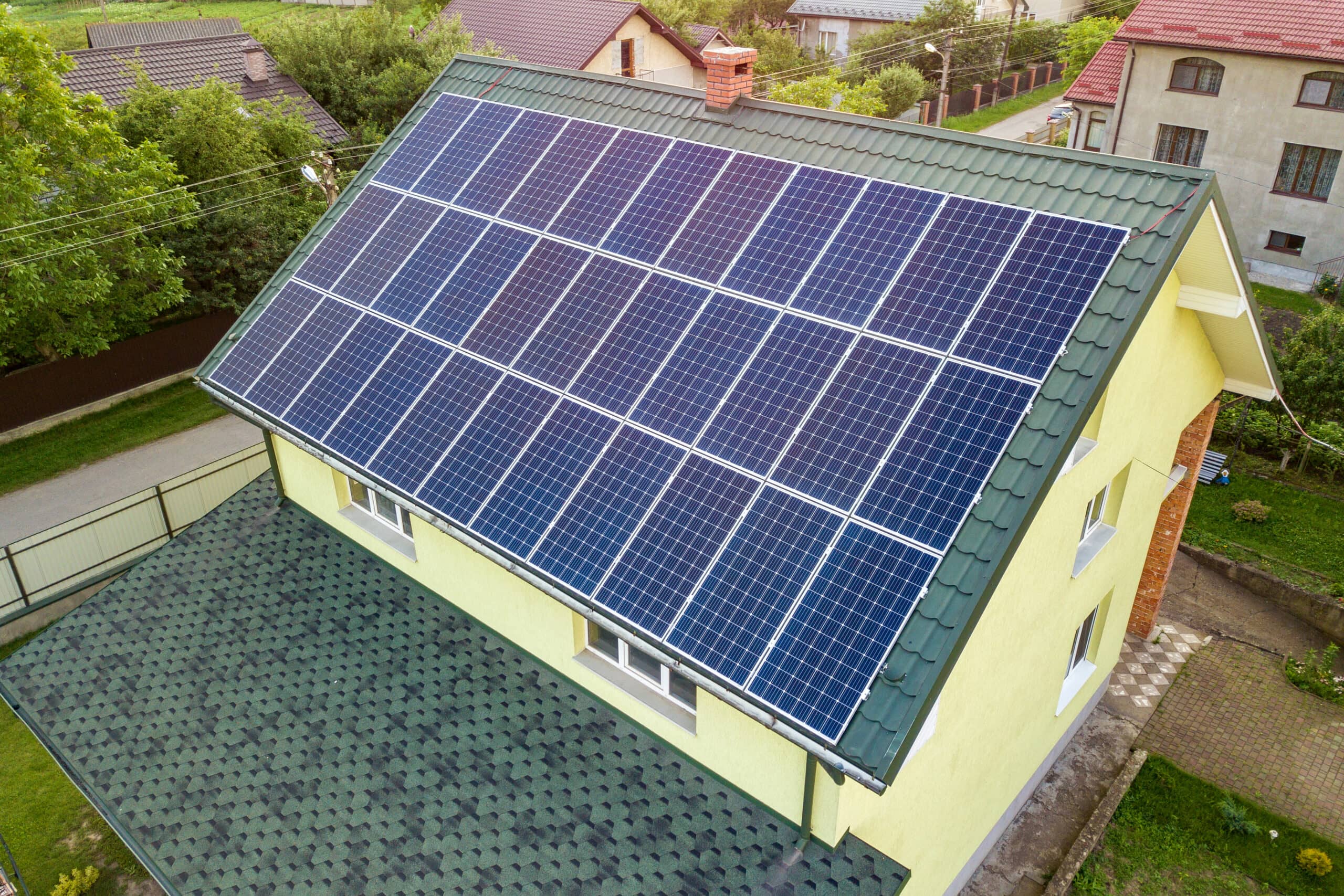Solar power systems consist of various components like solar panels, inverters, batteries, and charge controllers. Solar panels convert sunlight into direct current (DC) electricity. Inverters play a crucial role in solar energy systems by converting this DC power generated by solar panels into alternating current (AC) power, the type of electricity used in most homes and businesses. This Article aims to explain how inverters convert DC power from solar panels into AC power. This process is essential because it allows the electricity generated by solar panels to be compatible with the electrical grid and appliances that run on AC power. Let’s begin!
DC power has a unidirectional flow of electricity, meaning it moves in one direction only. It’s commonly found in sources like batteries and solar panels, where the electricity flows steadily in a single direction.
AC power, on the other hand, has a bidirectional flow of electricity, meaning it alternates direction periodically. It’s the power commonly used in household electrical systems and is compatible with the grid, allowing for efficient electricity distribution.
AC power is preferred for homes and the grid due to its transmission efficiency. The ability of AC power to easily change voltage levels through transformers makes it ideal for long-distance power transmission. Additionally, AC power is compatible with most household appliances, making it the standard choice for residential and commercial electricity needs.
An inverter is a crucial component in solar power systems as it converts the direct current (DC) electricity generated by solar panels into alternating current (AC). In addition to this conversion, inverters play a key role in synchronizing the produced AC power with the electrical grid, ensuring a seamless integration of solar-generated electricity with the existing power supply.
There are several types of inverters used in solar power systems:
1. String Inverters: These commonly connect multiple solar panels in a series. They are cost-effective but can be affected by shading or panel mismatch.
2. Microinverters: These are installed on each solar panel, converting DC to AC at the panel level. They are more efficient in situations with shading or panel variations.
3. Power Optimizers: These devices optimize the performance of each solar panel and are often used in combination with string inverters to enhance system efficiency.
Inverters are vital in ensuring the usability of solar-generated power by converting DC power into AC power, which is compatible with the electrical grid and most household appliances. Without inverters, the electricity produced by solar panels would not be usable for powering homes or feeding back into the grid. Their role is essential in maximizing the efficiency and effectiveness of solar power systems.
Inverters operate based on converting direct current (DC) electricity from solar panels into alternating current (AC) electricity. This conversion process involves sophisticated switching mechanisms within the inverter.
Below are the detailed steps involved in the conversion process:
Step 1: DC Power from Solar Panels:
Solar panels generate DC power through the photovoltaic effect, where sunlight interacts with the semiconductor material in the panels to produce a flow of electrons, creating direct current electricity.
Step 2: Conversion to AC Power through Inversion:
Inverters use transistors and switching elements to convert the DC power into AC power. The inverter creates a simulated AC waveform from the DC input by rapidly switching these components on and off.
Step 3: Filtering and Refining the AC Output:
After the inversion process, filters smooth out the waveform and produce a clean sine wave, ensuring the AC output is stable and consistent. This step is crucial for efficiently providing high-quality electricity to power appliances and devices.
Inverters synchronize the produced AC power with the grid by matching the frequency and phase of the solar-generated electricity with the grid power. This synchronization is essential for grid-tied systems to ensure that solar power seamlessly integrates with the existing electrical infrastructure, allowing for efficient distribution and utilization of renewable energy.
By understanding the intricate process of converting DC to AC power and the importance of synchronization with the grid, we can appreciate the critical role inverters play in enabling the effective use of solar-generated electricity.
Power electronics play a crucial role in the conversion process of an inverter. Transistors such as Insulated Gate Bipolar Transistors (IGBTs) and Metal-Oxide-Semiconductor Field-Effect Transistors (MOSFETs) are essential components that facilitate switching DC to AC power. These transistors act as the switching devices that control the flow of electricity and enable the inversion process to occur efficiently.
Another vital component inside an inverter is the control circuitry, which typically includes microcontrollers and Digital Signal Processors (DSPs). These components are responsible for monitoring and adjusting the power output of the inverter. They ensure that the inverter operates optimally, regulates the voltage and frequency of the AC output, and manages the system’s overall performance.
Filters and transformers are integral components that contribute to refining the AC output produced by the inverter. Filters help smoothen the waveform and eliminate unwanted noise or harmonics, ensuring a clean and stable AC signal. Transformers are used to step up or down the voltage levels as needed, enhancing the efficiency and safety of the inverter system.
These components work harmoniously to ensure the inverter functions effectively, providing a reliable and high-quality AC power output for various applications. Their roles in refining the AC output and maintaining safety and efficiency underscore their importance in the overall operation of an inverter system.
One key aspect impacting inverter efficiency is conversion losses. These losses occur during the conversion of DC power to AC power due to inherent inefficiencies in the components like transistors and transformers. Additionally, temperature and load conditions play a significant role in efficiency. High temperatures can increase resistance and lead to more losses while varying loads can affect the inverter’s ability to maintain efficiency across different operating conditions.
The Inverter efficiency is typically measured using two primary metrics: peak efficiency and weighted efficiency (commonly referred to as European efficiency). Peak efficiency represents the highest efficiency level the inverter can achieve under ideal conditions. In contrast, weighted efficiency considers the inverter’s performance across a range of loads to provide a more realistic efficiency value over various operating conditions.
Efficient cooling helps maintain optimal operating temperatures, reducing losses and enhancing overall efficiency. Advanced control algorithms also play a vital role in enhancing performance by optimizing the inverter’s operation based on real-time conditions. These algorithms can adjust parameters dynamically to improve efficiency and respond to load changes effectively.
Grid-tied inverters are designed to connect solar PV systems to the utility grid. They offer features like synchronization with the grid, maximizing power output, and ensuring safety by disconnecting in case of grid failures. One significant benefit of grid-tied inverters is their ability to enable net metering. Net metering allows solar system owners to sell excess electricity to the grid, offsetting utility bills and promoting renewable energy adoption.
Hybrid inverters combine the functionalities of grid-tied inverters with battery storage systems. They enable seamless integration of solar, grid, and stored battery power. These inverters are crucial for efficiently managing power from multiple sources, ensuring continuous power supply even during grid outages. By intelligently balancing power sources, hybrid inverters optimize energy usage and provide backup power when needed.
Smart inverters represent the next generation of inverters with advanced grid support functions. They can actively stabilize the grid by regulating voltage and frequency, enhancing grid reliability and resilience. Additionally, smart inverters offer remote monitoring and control capabilities, allowing users to monitor performance, adjust settings, and diagnose issues remotely. This remote accessibility enhances system maintenance and optimization, improving overall performance.
We can leverage their features and benefits by embracing grid-tied, hybrid, and smart inverter technologies to create more efficient, reliable, and intelligent energy systems.
Looking ahead, the future of inverter technology is promising, with ongoing advancements geared towards enhancing efficiency, reliability, and grid integration. Some key trends include the development of smart inverters with advanced grid support functions, increasing focus on energy storage integration for grid resilience, and adopting digital monitoring and control systems for optimized performance. Additionally, research is underway to improve inverter efficiency, reduce costs, and enhance the overall sustainability of solar power systems.
As we move forward, embracing these advancements in inverter technology will be crucial for accelerating the transition to a more sustainable and renewable energy future.




